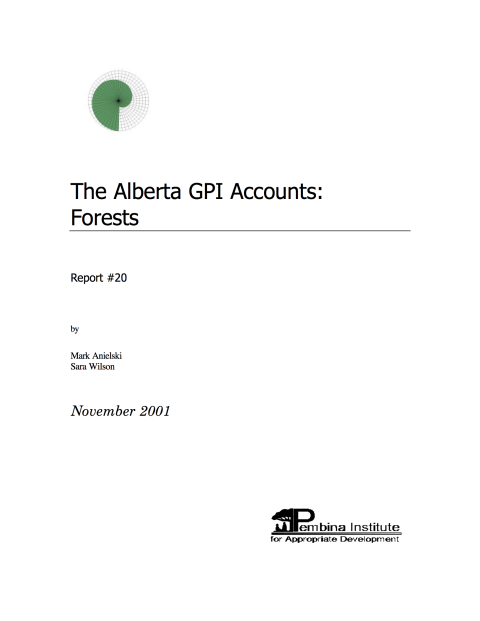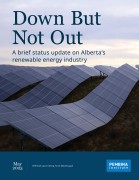This is one of 28 reports that provide background for the Genuine Progress Indicators (GPI) System of Sustainable Well-being Accounts. It explains how we derived the index that was earlier published in Sustainability Trends 2000: The Genuine Progress Statement for Alberta, 1961 to 1999.
This report examines the trends in the sustainability and ecological health of Alberta's forests as a measure of the genuine well-being of Alberta's natural capital and ecosystem integrity. The report represents the continued development of forest resource accounts for Alberta that were initiated by Mark Anielski (formerly of Alberta Forestry, Lands and Wildlife, and Alberta Environment) to provide a meaningful accounting system that tracks the sustainability of forest capital. This report looks at several trends in some key indicators of both the biophysical condition of Alberta's forests as well as the economic returns to Albertans from developing forest and timber capital resources. Indicators such as the Timber Sustainability Index (TSI) are derived from detailed forest resource accounts that compare annual growth rates of timber with the annual depletion rates due to harvesting and natural disturbances by fire, insect and disease. This report also examines the condition of forest ecosystems by looking at the trends in the fragmentation of these ecosystems due to industrial development and linear disturbance. We also examine other forest ecosystem services including carbon sequestration and watershed services. Finally, the report examines the economic returns to consuming timber capital that contribute to Alberta's economic growth and prosperity; indicators such as forestry GDP, forest economic rent and jobs per unit of wood harvested. The report provides a forty-year picture of the sustainability of the living capital of Alberta's forest and asks the questions: are Alberta's forests sustainable over the long term and are there emerging risks to sustained timber harvest due to fire and other liabilities?











